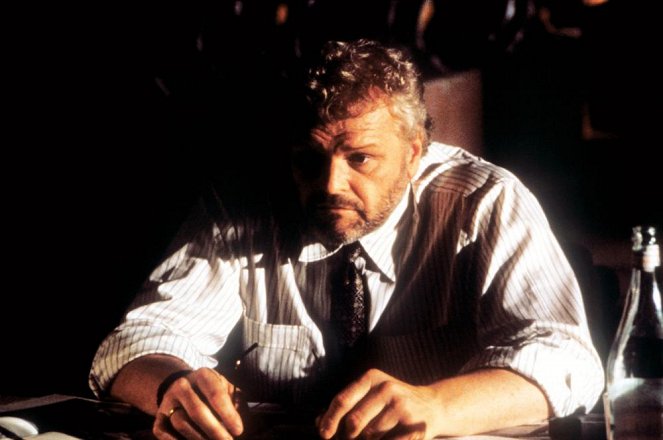Directed by:
Peter GreenawayScreenplay:
Peter GreenawayCinematography:
Sacha ViernyComposer:
Wim MertensCast:
Brian Dennehy, Chloe Webb, Lambert Wilson, Sergio Fantoni, Stefania Casini, Vanni Corbellini, Claudio Spadaro, Marino Masé, Francesco Carnelutti (more)VOD (1)
Plots(1)
Brian Dennehy stars as the distinguished American architect Stourley Kracklite, in Rome with his young wife, Louisa (Chloe Webb), to supervise an exhibition devoted to his hero, the eighteenth-century architect Étienne-Louis Boullée. Stourley honours the past at the expense of his present, driving the neglected Louisa into the arms of his rival, Caspasian (Lambert Wilson). Wracked with abdominal pains, jealousy and paranoia, he slowly loses his grip on all that is important to him. One of the most visually striking films of the 1980s, with a celebrated score by Glenn Branca and Wim Mertens, The Belly of an Architect shows one of British cinema's true visionaries at the height of his powers. (British Film Institute (BFI))
(more)Videos (1)
Reviews (1)
Classical education (or rather education in classical art) can be felt in every shot of Greenaway's films, and few filmmakers would dare to present a subjective story about an architect against the background/through the analysis of classical European culture presented to the majority of people (in both the film and real world...) by a completely unknown architect. The author's sense of visual analogies and metonymies permeates the entire film (as always), here built on a basic axis: Boullé's architectural design of the Cenotaph (1784) is compared to the belly, with the belly as a symbol of indulgence, insatiability, etc. of classical European culture (the story takes place in Rome...). The belly becomes an obsession for Kracklite and he is forced, through his inner identification with Boullé, to experience the history of this culture first-hand. That includes everything = intrigues, egoism, insidiousness, and treachery, but on the other hand also with the persistent struggle for his goal, self-destructive idealism, an attempt to achieve (impossible) perfection, etc. Boullé truly becomes Kracklite and vice versa, and the 18th century enters the twentieth. From a cinematographic point of view, it is worth mentioning the symmetrical composition of shots, perfectly evoking the disposition of classical architecture.
()
Gallery (19)
Photo © Hemdale Film


